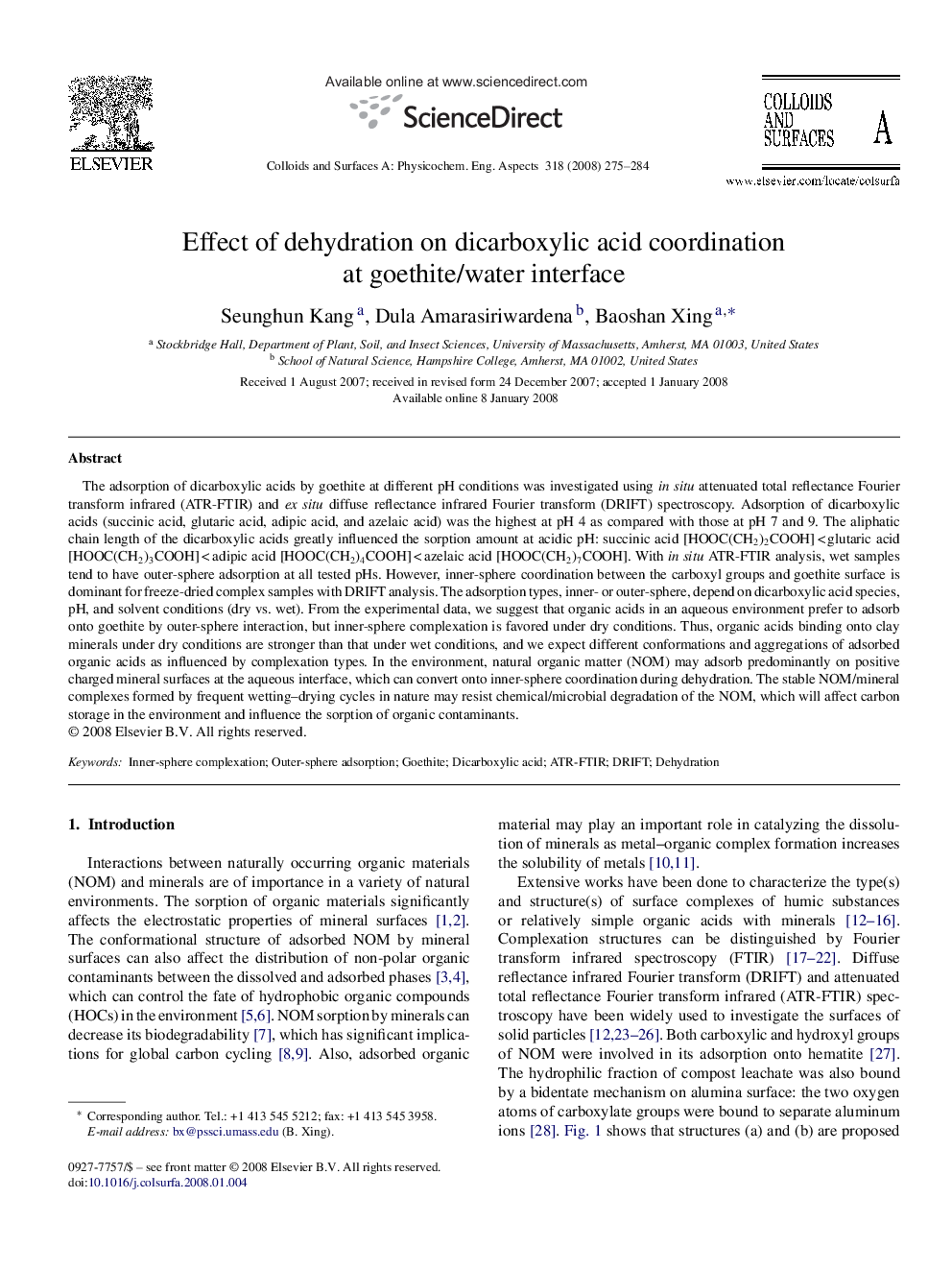| Article ID | Journal | Published Year | Pages | File Type |
|---|---|---|---|---|
| 597094 | Colloids and Surfaces A: Physicochemical and Engineering Aspects | 2008 | 10 Pages |
The adsorption of dicarboxylic acids by goethite at different pH conditions was investigated using in situ attenuated total reflectance Fourier transform infrared (ATR-FTIR) and ex situ diffuse reflectance infrared Fourier transform (DRIFT) spectroscopy. Adsorption of dicarboxylic acids (succinic acid, glutaric acid, adipic acid, and azelaic acid) was the highest at pH 4 as compared with those at pH 7 and 9. The aliphatic chain length of the dicarboxylic acids greatly influenced the sorption amount at acidic pH: succinic acid [HOOC(CH2)2COOH] < glutaric acid [HOOC(CH2)3COOH] < adipic acid [HOOC(CH2)4COOH] < azelaic acid [HOOC(CH2)7COOH]. With in situ ATR-FTIR analysis, wet samples tend to have outer-sphere adsorption at all tested pHs. However, inner-sphere coordination between the carboxyl groups and goethite surface is dominant for freeze-dried complex samples with DRIFT analysis. The adsorption types, inner- or outer-sphere, depend on dicarboxylic acid species, pH, and solvent conditions (dry vs. wet). From the experimental data, we suggest that organic acids in an aqueous environment prefer to adsorb onto goethite by outer-sphere interaction, but inner-sphere complexation is favored under dry conditions. Thus, organic acids binding onto clay minerals under dry conditions are stronger than that under wet conditions, and we expect different conformations and aggregations of adsorbed organic acids as influenced by complexation types. In the environment, natural organic matter (NOM) may adsorb predominantly on positive charged mineral surfaces at the aqueous interface, which can convert onto inner-sphere coordination during dehydration. The stable NOM/mineral complexes formed by frequent wetting–drying cycles in nature may resist chemical/microbial degradation of the NOM, which will affect carbon storage in the environment and influence the sorption of organic contaminants.
